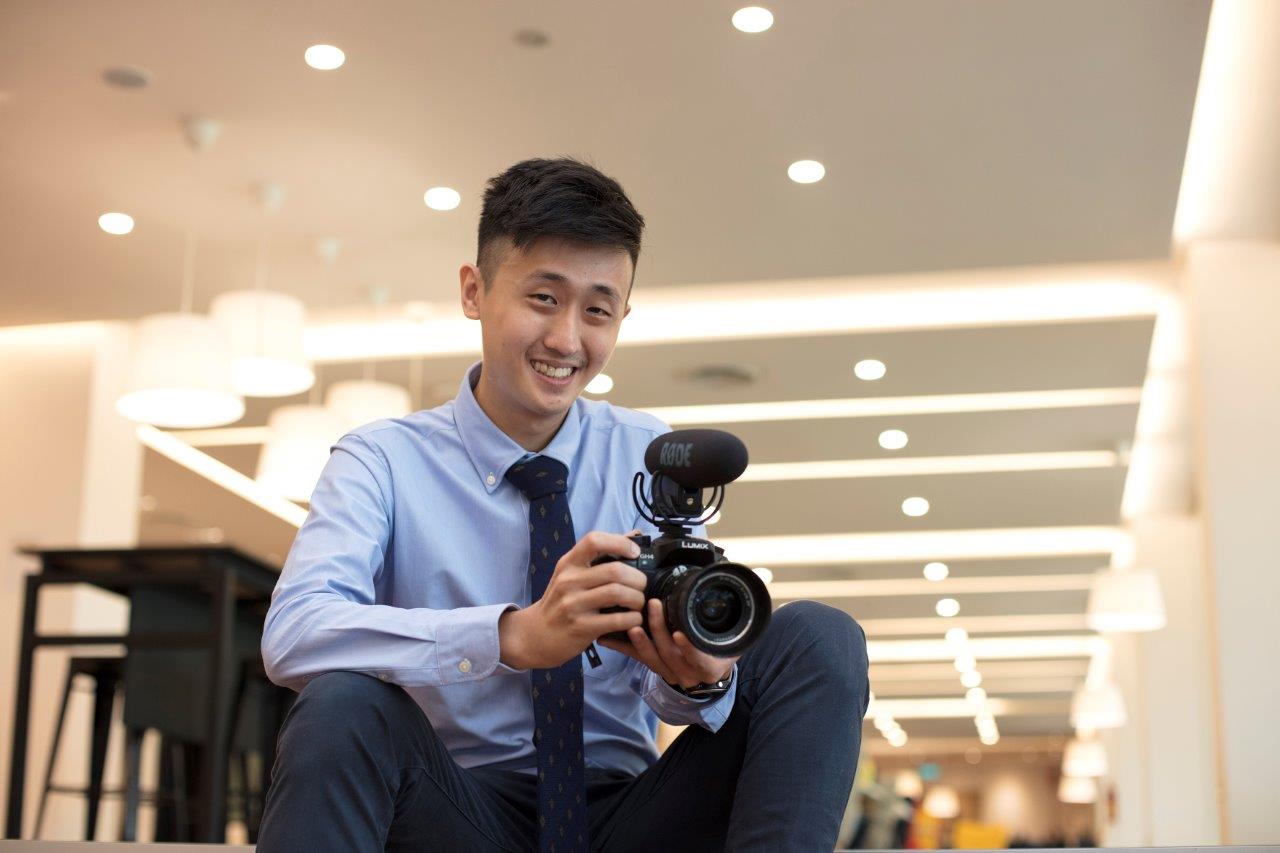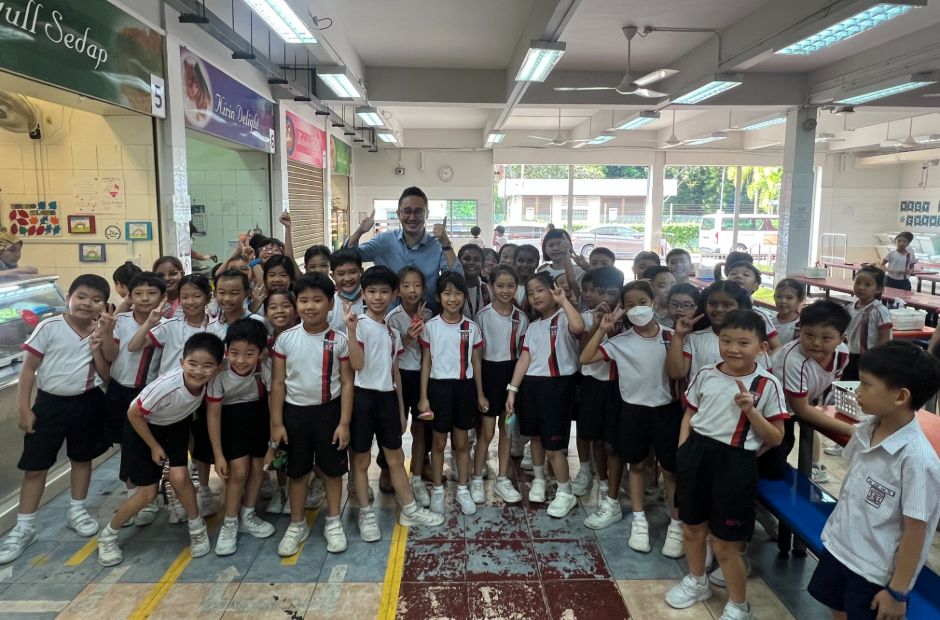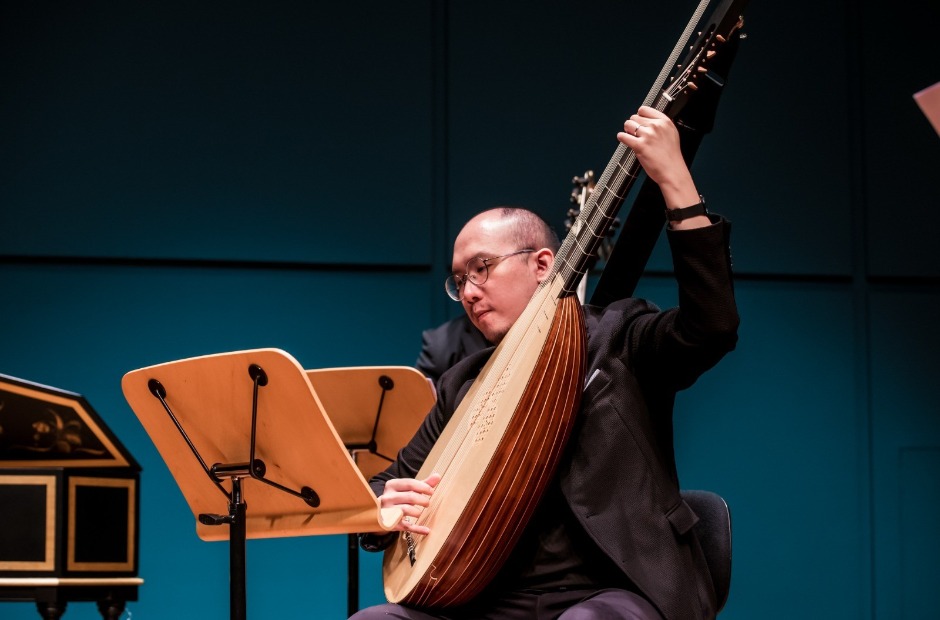Victor Gan Yi Xiang, Nan Hua High School, Outstanding Youth in Education Award 2021 Recipient
It was a blazing hot day and a group of students were panting going up Bukit Timah Hill armed with video cameras. Their mission: to document their adventure as part of an interest-based project that my Secondary 2 Art class had embarked on.
I had asked my students to work on a project of their choice and this group, inspired by vloggers they watched, had chosen to video their experience of climbing Bukit Timah Hill. Driven by their enthusiasm, the group had picked up basic videography and video editing skills. What they had overlooked – a map for the simplest way to the top. But after descending, hot and sweaty from the climb, they said, “We didn’t realise that we had taken the more difficult path up the summit. But we discovered unexpected things, like the caves, and we managed to notice some unique plants along the way.”
The reason for my students’ optimism and motivation? The fact that this project was self-initiated had a lot to do with it, I believe.
When students’ interests are aligned with their projects, and they are given the agency to make decisions, they go the extra mile. I have seen it over and over. I have experienced this in my own life too. And I want to tap into that enthusiasm.
As a Primary 4 student, I was intrigued by the drawings in a book I found in the library. I borrowed the book and spent the subsequent weeks learning how to draw a pear. I felt so much pleasure from shading the fruit and working to get it right. I borrowed more drawing books and I still remember the sense of satisfaction I felt when my skills slowly improved.
I want my students to experience the same sense of joy and achievement when they learn. Hence, I help my students find that connection and interest, so that they are driven to explore it. Self-initiated learning is like a bonfire. It requires a spark (motivation) to set it alight and then you need a pipeline of fuel (the principles and processes of artwork) to keep the flame of creativity going. I aim to provide both to my students.
The Spark
Triggering that interest or lighting that spark can be different for every student. I offer exposure to a variety of artistic forms, so my students can find something that matters to them.
Every year, I organise an ArtsFest for the lower secondary students, when they create work that is outside their curriculum.
There was one year, I worked with the History department on a joint project. Students were split into two teams. One went to the National Museum of Singapore while the other went to the National Gallery Singapore. Each team was assigned a time period to study. The result was a flotilla of floats, made out of trolleys and bicycles, showcasing everything from HDB blocks to hawker food to an aeroplane to represent the Japanese Occupation.
Last year, ArtsFest took on a hybrid format. I produced a video series titled “I am…” to get students and teachers to share a hidden interest. I wanted the students to speak about things that mattered to them and be inspired to develop an interest of their own. Everyone was surprised when a Secondary 1 student, whom we knew as an avid basketballer, revealed that he was also an accordion player. He had become intrigued by this instrument after a chance encounter with street musicians in Amsterdam and had learnt to play it himself. A music teacher, known more for his taste in folk and classical music, revealed, much to the students’ excitement, that he was also a rock guitarist. These videos prompted everyone to talk about their interests and how self-driven they were in pursuing them. They showed how their passion had enabled them to improve themselves continuously.
Every piece of art is a reflection of the artist, which is why I have no qualms in telling my students that it is alright to ‘borrow’ good techniques from their peers. See something interesting? Go ahead and borrow good practices. The teacher can still see the difference because no two artworks are ever the same. Everyone’s artwork is unique.
The Fuel Pipeline
Once that spark has been lit, it’s onto the fuel or the processes. I believe that if you can light the spark and then give students the process framework, they can direct their own learning. I put this belief to the test with a team of fellow teachers. We asked two classes to choose any art form or food and consumer-related idea and create something using the process framework. It worked.
All the students set their own goals and planned their learning. Out of this experiment came a variety of projects – from videography to painting and jewellery making. One student even developed her interest in resin-jewellery-making and became so good at it that she could sell her works on social media.
This belief of mine has sometimes led me into novel and challenging situations as well. A student wanted to embark on a paper-cutting project for her graduating work. She usually worked with colour pencils and water colours. I was also completely unfamiliar with paper-cutting. But I encouraged her to take on the challenge, using the same process that she would use to approach a more familiar medium. She experimented on her own while looking at various artists’ references. She applied the same process and principles, ending with a personal and unique artwork. More than paper-cutting, she learnt that she could follow her interests, try new things, pick up the right skills and achieve her goal through perseverance.
We Teach Who We Are
Not all my students will go on to become artists, but they will take away important life skills from my classes. I believe strongly that we teach who we are. As an art teacher, I maintain my own artistic practice in filmmaking. Since graduation, I have made a film a year and share my creative processes and difficulties with my students. I am their closest contact to an art practitioner, so I want my students to witness the struggles that I face and recognise the importance of resilience, which artists need in abundance to hone their craft.
Yes, there will be artist’s block and moments of self-doubt and art works that don’t quite turn out as planned. But through this journey, the students will discover and pursue their passions, develop resilience, and find confidence and joy.
These lessons stay long after the art class is over.




.jpg)

